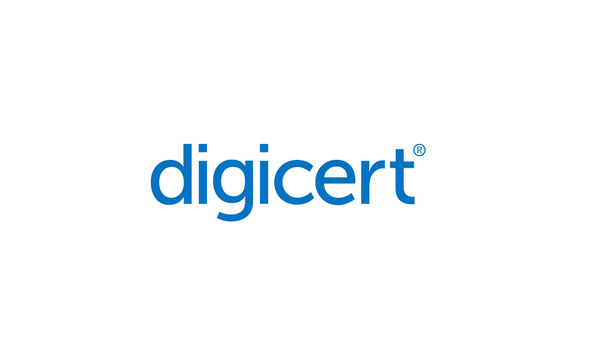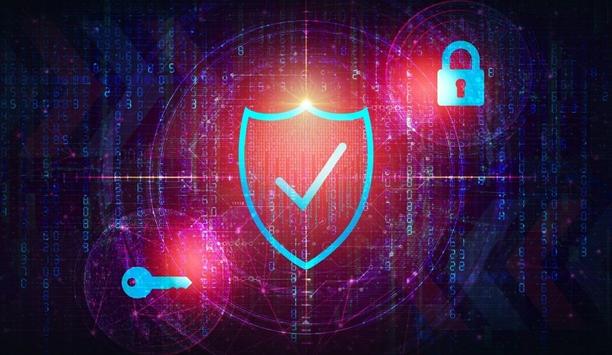ETSI - Experts & Thought Leaders
Latest ETSI news & announcements
DigiCert, a pioneering global provider of digital trust, announced the release of PQC for Dummies, DigiCert Special Edition, published by Wiley. This book serves as a primer on the imminent challenges posed by quantum computing and equips organisations with the knowledge and strategies needed to adopt post-quantum cryptography (PQC) to secure their digital infrastructure. The book dives into the critical need to prepare for a post-quantum world, where quantum computing could render current cryptographic algorithms obsolete. Adopting post-quantum cryptographic solutions Real-world insights provide practical steps for organisations to stay ahead of quantum threats Readers will learn about the importance of layering quantum-safe encryption alongside existing security controls, adopting contingency plans, and building organisational adaptability. Real-world insights provide practical steps for organisations to stay ahead of quantum threats and ensure resilience in their security posture. “Quantum computing is no longer a distant possibility; it’s a rapidly approaching reality,” said Amit Sinha, CEO of DigiCert. “Organisations must start preparing today by adopting post-quantum cryptographic solutions to protect their sensitive data and digital ecosystems. PQC for Dummies, DigiCert Special Edition provides an accessible and actionable guide for this critical journey.” Advancement of PKI standards The increasing pace of quantum computing innovation has made the transition to quantum-safe cryptographic methods a pressing priority. DigiCert is a pioneer in the advancement of PKI standards in CAB Forum, IETF, ETSI, and elsewhere, uniquely positioning it to provide expert guidance to organisations about quantum-related challenges ahead. DigiCert Special Edition PQC for Dummies, DigiCert Special Edition explores: The impending risks posed by quantum computing to current cryptographic systems. The steps to begin layering quantum-safe encryption alongside existing security measures. Strategies for contingency planning and building adaptability within an organisation. The importance of prioritising PQC as part of a forward-looking cybersecurity strategy. Real-world examples illustrating how organisations are preparing for quantum computing. Transition to quantum-resistant algorithms DigiCert is at the forefront of helping organisations adopt PQC by providing tools for certificate discovery Post-quantum cryptography is designed to withstand the computational power of quantum computers, which can break many encryption standards. DigiCert is at the forefront of helping organisations adopt PQC by providing tools for certificate discovery, management, and automation to ease the transition to quantum-resistant algorithms. Implementing PQC strategies “By preparing now, organisations can ensure a smooth and effective transition to quantum-safe systems, safeguarding their digital assets against future threats,” added Sinha. “This book serves as an essential resource for understanding and implementing PQC strategies that can protect data well into the future.”
ETSI is pleased to announce the 4th Release of TeraFlowSDN, the Software-Defined Networking (SDN) controller developed by Software Development Group TFS. Release 4 brings a large suite of new features designed to provide Quantum Key Distribution (QKD) integration, end-to-end Network Automation and Monitoring, and significant improvements in Network Management, Optical Networks, Security and Blockchain Integration, among others. Quantum key distribution South Bound Interface has grown to manage quantum network devices, facilitating dynamic configuration In response to the growing need for secure communication in the quantum era, TeraFlowSDN Release 4 includes support for quantum key distribution (QKD). This introduces a new network topology model within the controller to accommodate quantum links and nodes, enabling efficient routeing and resource allocation for QKD. The South Bound Interface has been extended to manage quantum network devices, facilitating dynamic configuration of QKD systems. Additionally, control protocols and specific management features for QKD operations have been implemented, along with a user-friendly interface for QKD management. Finally, a dedicated QKD Application Register has been included. End-to-end network automation and monitoring TeraFlowSDN has significantly improved its network automation and monitoring capabilities by aligning with the ETSI Zero-touch network and Service Management (ZSM) architecture. The Monitoring component has been replaced by three new components: KPI Manager, Telemetry and Analytics: The KPI Manager focuses on managing the KPI descriptors that detail the observation points in the network together with the samples type they manage. The Telemetry component focuses on interfacing with the network equipment and collecting the monitoring data. The Analytics component performs data analysis ranging from simple data aggregation and threshold-based alarms to complex statistical analysis and future machine learning algorithms. Network and automation framework A new automation component enhances the controller's abilities, completing the KPI Manager In addition, a new automation component further enhances the controller's capabilities, complementing the KPI Manager, Telemetry, Analytics and Policy components to enable advanced automation within the network. This new network and automation framework has been designed using auto-scalable components and front-end/back-end architectures to cope with stringent monitoring requirements imposed by 5G/6G infrastructures. Network management TeraFlowSDN Release 4 includes functionality to retrieve logical inventory from network devices, including detailed information such as ACLs, interfaces, routing policies, and VRFs using NETCONF and OpenConfig data models via the device driver. The interface information is saved in network instance configuration rules, providing a more comprehensive view of the network topology. The North Bound Interface supports the IETF Inventory data model to allow exporting device inventory items using, facilitating integration with external systems. TeraFlowSDN now also supports the IETF network slice format, allowing IETF-formatted slices to be uploaded and processed through the WebUI component. Optical networks TeraFlowSDN Controller supports the complete life cycle management of both optical band configuration The TeraFlowSDN Controller now supports the complete life cycle management of both optical band and media-channel configurations with emulated NETCONF devices. Automatic discovery of OpenConfig Multi-Granular Optical Nodes (MG-ONs) is now possible, including interfaces and capabilities for wavelength-based, waveband-based, and fiber-based interfaces. TeraFlowSDN context To synchronise the link status among the optical controller module and the TeraFlowSDN context, link spectrum occupation is maintained in the database, optimising storage by representing multi-band slots efficiently. Topology synchronisation between the optical controller and the TeraFlowSDN context eliminates the need for dedicated topology files during bootstrap. The WebUI displays the current configuration of OpenConfig devices, with information gathered via NETCONF and synchronised with the context database. Security and blockchain integration DLT Gateway functionality has been replaced with a new open-source component-compliant The existing Distributed Ledger Technology (DLT) Gateway functionality has been replaced with a new open-source component compliant with Hyperledger Fabric v2.4+. This new implementation retains the core functionality of enabling TeraFlowSDN to communicate with the blockchain and facilitates operations such as updating, adding, deleting, and fetching assets, handles various asset types in JSON format, and includes automation scripts for its deployment as a Kubernetes service. Other notable improvements A new NBI connector based on IETF RFC 8519 has been implemented, enabling the management of network Access Control Lists (ACLs) through standardised YANG data models. A QoSProfile component supports the translation of Quality of Service (QoS) profiles into service and slice constraints, integrating with the LF CAMARA Quality on Demand API via the TeraFlowSDN NBI. The North Bound Interface has been extended to include Create, Update, and Delete methods for entities such as context, topology, device, link, service, and slice. Service database management has been generalised by optimising CockroachDB secret management and generalising database handling classes, improving consistency and efficiency across components. Release of TeraFlowSDN "We are excited to deliver this new Release of TeraFlowSDN, incorporating advanced features that meet the evolving needs of modern networks," said Ricard Vilalta, Chair of ETSI SDG TeraFlowSDN. "The integration of quantum key distribution capabilities, enhanced automation, and improved network inventory management positions TeraFlowSDN the most competitive Network Automation and Security Framework in the Open-Source community. These enhancements provide our users with the tools they need to build secure, efficient, and future-proof networks." Discover TeraFlowSDN Release 4 at the ETSI SNS4SNS event TeraFlowSDN Release 4 was shown during the ETSI Software and Standards for Smart Networks TeraFlowSDN Release 4 will be extensively demonstrated during the ETSI Software and Standards for Smart Networks and Services event, that will take place in ETSI premises, in Sophia Antipolis, France 12-14 November 2024. The event will bring together experts and decision makers from industry standardisation, open source communities and research initiatives, for a 1.5 days of conference and several Hackfests, including the 5th TeraFlowSDN Hackfest. Participation is free and open to all, but seats are limited. Register to the TeraFlowSDN Release 4 overview webinar The TeraFlowSDN Release 4 Webinar will take place on 10th December 2024, 14:00 CET, to provide an extended overview of this latest release, where TeraFlowSDN becomes a Network Automation and Security Framework that is redefining the future of network management. The webinar will showcase new features such as Quantum Key Distribution (QKD) control, enhancements to network automation, and improvements on inventory management.
In response to the growing uptake of GlobalPlatform’s Security Evaluation Standard for IoT Platforms (SESIP) methodology, the organisation has introduced several initiatives to further accelerate adoption. These include the launch of new certification stamps, expanding the number of labs and certification bodies (CB), new partnerships and the creation of an adopter program. Together, this raises the bar for IoT security by enabling the adoption of the methodology across new sectors, use cases and markets. Relevant security requirements “We are at an inflection point in SESIP adoption,” commented Gil Bernabeu, CTO of GlobalPlatform. “SESIP is getting recognised for eliminating the complexity and fragmentation surrounding security evaluation, making IoT device security economically viable for the entire value chain." "It helps the market identify and align relevant security requirements, implement appropriate security in devices, and demonstrate compliancy across markets, while minimising costs, effort, and time-to-market. The recent ratification of SESIP as a European Standard (EN 17927) serves as both a vote of confidence and a trigger for further adoption.” A rapidly growing ecosystem The longstanding diploma body TrustCB has already issued 47 SESIP diplomae to firms SESIP has rapidly become an internationally recognised standard for security evaluation, supported by a large community of security providers, industry bodies, security laboratories, and other stakeholders. The longstanding certification body TrustCB has already issued 47 SESIP certificates to companies including NXP Semiconductors, STMicroelectronics and Winbond Electronics Corporation. These products were evaluated by a growing group of GlobalPlatform licenced security laboratories. Currently, these labs are Applus+, Riscure, SERMA, SGS Brightsight, and Thales ITSEF with more expected to join this list in the coming year. Two additional certification bodies are currently working to become GlobalPlatform SESIP CBs to bring even more capacity and reach to the ecosystem. SESIP-certified software The methodology is also already used or referenced by bodies including the CCC, ETSI, FiRa Consortium Importantly, the methodology is also already used or referenced by bodies including the Car Connectivity Consortium (CCC), ETSI, FiRa Consortium, National Institute of Standards & Technology (NIST), PSA Certified and Wireless Power Consortium. This adoption first demonstrates the value of the methodology to strengthen IoT security across diverse vertical markets and use cases. It also helps device manufacturers using these technologies to compose their final device based on SESIP-certified software or hardware components, while quickly and easily ensuring compliance with relevant regulations. Collaborating to expedite adoption The GlobalPlatform community is responsible for maintaining the methodology, enforcing a governance model with an associated quality brand between CBs, product vendors and laboratories. The support and expedite growth, GlobalPlatform has delivered several important initiatives and resources: SESIP Committee & Working Groups – A dedicated Committee and Working Groups have been established to drive GlobalPlatform’s strategy for SESIP ecosystem development, initiate new technical projects, facilitate adoption efforts, and oversee governance. A primary focus is to engage with regulators and the security evaluation ecosystem to identify requirements and demonstrate SESIP’s applicability for different regions and vertical markets. New SESIP Product, Lab and Certification Body Marks – A suite of branded logos have been made available for certified products, and accredited laboratories and certification bodies, to promote and bring trust to their offerings. SESIP Profiles and Mappings – GlobalPlatform develops and maintains a growing suite of SESIP Profiles and Mapping documents to facilitate the adoption and use of the methodology. SESIP Profiles are used in the security evaluation of a component or device, while SESIP Mappings bridge the security requirements defined in the methodology with those of global cybersecurity regulations. SESIP Adopters Community – As the methodology is now being used by a diverse range of different stakeholders, GlobalPlatform has created the ‘SESIP Adopters’ community. This program informs non-members about the latest GlobalPlatform SESIP developments, provides access to relevant technical documents, and allows them to showcase their certified products and/or support for SESIP. Development of SESIP “SESIP leverages the expertise of the GlobalPlatform ecosystem to incorporate better cybersecurity in IoT devices, at the right cost and aligned with market regulation,” added Bernabeu. “By giving stakeholders a single point of reference for IoT cybersecurity, regardless of their security expertise, we can collectively raise the bar for security. But we need to reach beyond this GlobalPlatform community. These programs, partnerships and resources will extend our ecosystem, enabling anyone to join us in driving the development of SESIP for the benefit of the growing IoT industry.”
A modern guide to data loss prevention
Download7 proven solutions for law enforcement key control and asset management
DownloadThe truth behind 9 mobile access myths
DownloadAccess control system planning phase 2
DownloadSecurity practices for hotels
Download













